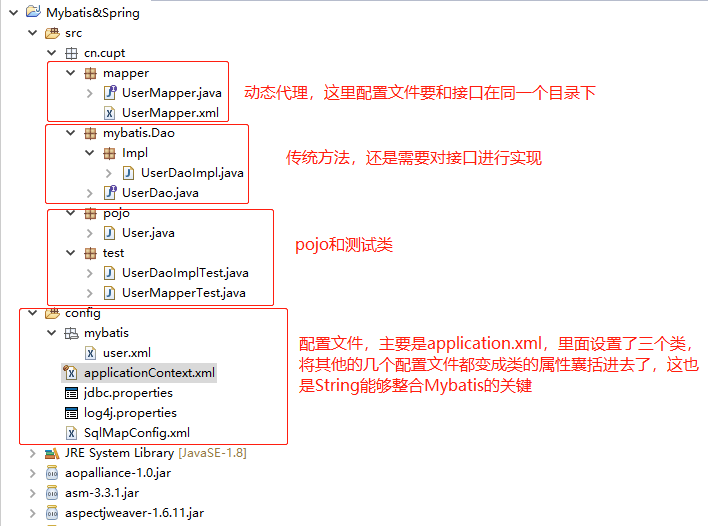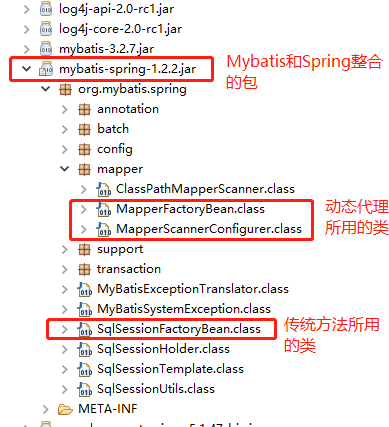Java框架學習_Mybatis(九)Mybatis整合Spring
阿新 • • 發佈:2019-01-14
所謂整合,就是將Mybatis中的類的建立交給Spring來管理(IOC),或者說是將Mybatis整個融入到Spring中,畢竟Mybatis只是後端的持久層框架,而Spring是全棧式框架。
1、Mybatis整合Spring:
萬事先導包,這裡給出我的整個測試專案的原始碼:source code
這裡給出整合專案的基本架構:

Mybatis作為持久層框架,連線資料庫有兩種方法,第一種是正常配置,第二種是動態代理 ,正常配置就是按照Mybatis架構體系,來一步一步地配置,動態代理就是按照Mybatis的動態代理模式
既然是整合到Spring裡面,就必須遵循Spring的規矩,將Mybatis的類的建立全部交給Spring來管理(IOC)
Spring說Mybatis你那些配置太煩了,我給你提供幾個類,你把你的配置當作屬性交給我的這些類就行了
也就是下面的三個類:你會發現這三個類的屬性就是在Mybatis中配置的東西

而整合的關鍵,就是對這三個類的屬性進行配置的過程:applicationContext.xml
<?xml version="1.0" encoding="utf-8"?>
<beans
xsi:schemaLocation 配置好後你就可以去做一些測試,就像之前Spring通過對映找到相關的類然後呼叫方法一樣,這裡就是對上面三個類的方法的應用,主要還是動態代理的第二種:掃描包的用法,很簡單很關鍵(如果有多個包,用逗號隔開)
也就是說整合了之後Mybatis的核心包SqlMapConfig.xml完全可以刪掉,然後只要建立動態代理的Mapper包就行了,
